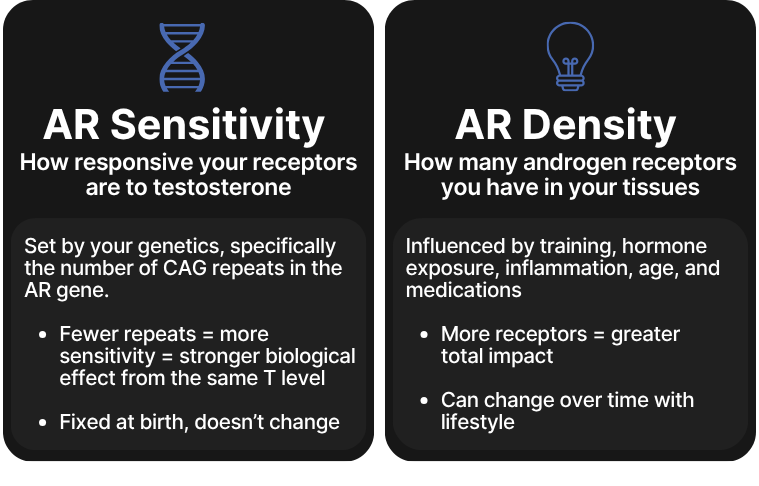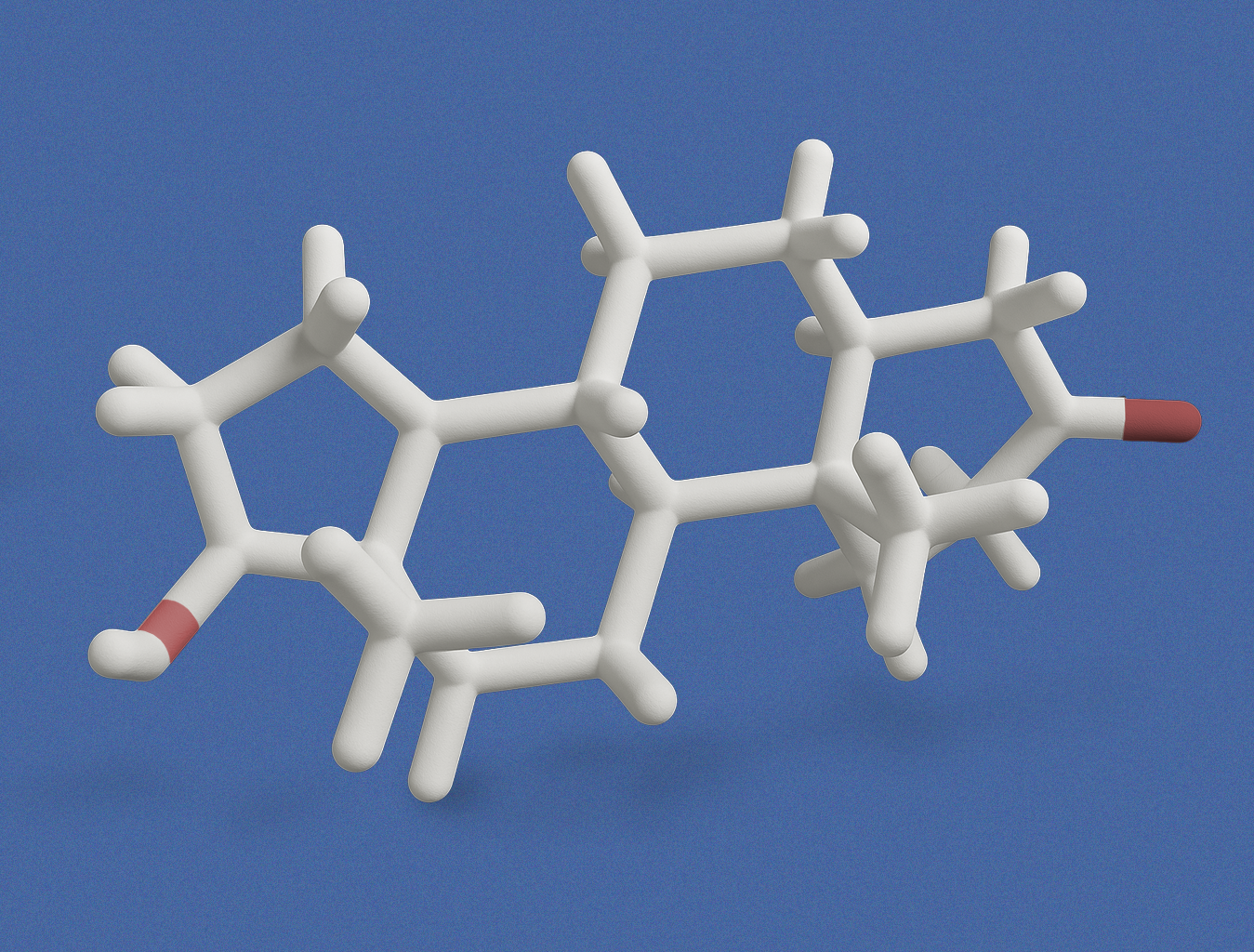If you’ve ever wondered why two men with the same testosterone levels can feel completely different, you’re not alone. One man might feel energized, confident, and strong, while the other struggles with fatigue, low mood, and sluggish recovery. The difference isn’t always about testosterone levels—it’s about how your body responds to testosterone. That’s where the androgen receptor (AR) comes in.
At the heart of your testosterone response are two key variables: AR Sensitivity and AR Density. These factors determine how efficiently your body uses testosterone, and understanding them could be the missing piece in your hormone health puzzle.
 AR Sensitivity: The DNA Blueprint
AR Sensitivity: The DNA Blueprint
AR Sensitivity refers to how responsive your androgen receptors are to testosterone. This sensitivity is determined by your genetics—specifically, the number of CAG repeats in the AR gene. Fewer repeats mean higher sensitivity. In simple terms: your cells respond more powerfully to the same amount of testosterone.
Think of AR Sensitivity like the brightness of a lightbulb. The manufacturer (your DNA) sets the brightness, and it stays the same throughout your life. If your bulbs are naturally brighter, you’ll get more light (or testosterone effect) even with the same wattage.
Men with shorter CAG repeats often report:
-
Higher energy levels
-
Faster recovery
-
Stable mood and motivation
-
Greater ease building muscle
Those with longer CAG repeats may experience:
-
Fatigue and sluggishness
-
Slower recovery from workouts
-
Trouble maintaining lean mass
-
Low drive, despite “normal” T levels
AR Density: The Lifestyle Lever
AR Density, on the other hand, refers to how many androgen receptors you have in your tissues. Unlike sensitivity, density can change over time based on factors like training, inflammation, medications, hormone exposure, and aging.
Returning to our light analogy, AR Density is like the number of lightbulbs installed. More bulbs mean more light, even if each one isn’t ultra-bright. And the good news? This is the piece you can influence through lifestyle choices.
For example, resistance training and proper hormone support can increase AR density, amplifying your testosterone response without necessarily changing your T levels.
Standard lab tests only tell you how much testosterone is in your blood. They don’t tell you how well your body is using it. That’s why some men with “normal” lab results still feel off. Your AR-CAG repeat length could hold the answer.
Understanding both your sensitivity (the brightness of each bulb) and density (how many bulbs are installed) allows for a more accurate, personalized approach to hormone optimization
Why This Matters
Understanding your AR CAG repeat length does more than explain how you feel. It unlocks a more accurate and personalized medical approach. This fixed genetic trait significantly affects how your body uses testosterone, which is why two men with the same lab values might need very different interventions. When paired with markers like total and free testosterone, SHBG, and 17 OHP, AR-CAG testing helps identify functional hypogonadism even when labs look "normal." For example, a man with a total T of 400 ng per deciliter and 29 CAG repeats may experience fatigue and low drive, while another with 17 repeats at the same level may feel fully optimized. In fact, ratios like Total and Free Testosterone to AR-CAG have shown greater accuracy than total testosterone alone in identifying biologically low androgen states.
This insight also informs treatment. Men with shorter repeats may require lower doses of TRT to achieve full effect, while those with longer repeats often need higher or more frequent dosing to overcome reduced receptor sensitivity. AR genotyping can even guide decisions in areas like hair loss treatment, fertility protocols, and metabolic optimization. By integrating this single genetic marker into your clinical picture, you move closer to a fully personalized strategy for hormone health.
Click the image above to learn more about our AR CAG testing
Start Your Marek Diagnostic Journey
Marek Health is leading the way in personalized hormone care by offering the only direct-to-consumer AR Sensitivity test. This genetic test reveals your AR-CAG repeat length—giving you insight into how your body actually uses testosterone.
If you’re tired of chasing lab numbers that don’t match how you feel, it might be time to look deeper. With genetic analysis, you’ll get answers rooted in your DNA and a path toward real, individualized optimization.
Understanding your testosterone levels is just the beginning. Unlock the deeper story written in your DNA by exploring your androgen receptor sensitivity—a key to true hormone optimization.
After learning about AR Sensitivity and Density, you’re now equipped with insights most standard labs overlook to get the most out of your Marek Diagnostics testing, whether you’re optimizing performance, energy, mood, or long-term wellness.
Disclaimer: This blog post is intended for informational purposes only and should not be considered medical advice. Consult with a healthcare professional before making any changes to your wellness routine.






Share:
Prepping for blood work